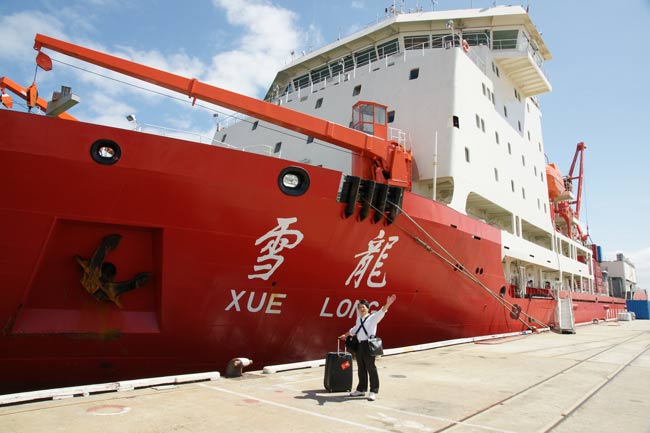Loneliest Observatory in Antarctica Looks to the Stars

A newrobotic observatory at the highest point of the Antarctic Plateau willcontinuously survey the skies on its own for almost a year.
The coldestand driest place on Earth makes an ideal location for stargazing without muchin the way of clouds or bad weather — not to mention Antarctica?s four months of complete darkness.
?We?retaking 10-second exposures of the sky for four months,? said Lifan Wang, a Texas A&M astrophysicist whocompared the hoped-for final results with ?a movie of the sky.?
Internationalcooperation
Getting thePLATeauObservatory (PLATO) to Antarcticarequired international cooperation among scientists from more than 60 nations.Wang helped organize the first meetings in Beijing, China, where scientists identified anAntarctic site called Dome A as the perfect place for an observatory. However,the frigid and isolated site also presents a challenge to keep the observatoryrunning smoothly.
PLATO willpower itself with solarpanels during the Antarctic summer and switch to high-efficiency enginesthat consume a total of 1,057 gallons (4,000 liters) of jet fuel during thelong winter months, when the sun does not shine.
?Shippingone barrel of fuel to Dome A costs nine barrels of fuel,? Wang noted, givingcredit to the Polar Research Institute of China (PRIC) for stepping up to fundthe operating costs and the expedition that installed PLATO.
Breaking space news, the latest updates on rocket launches, skywatching events and more!
Longtrek
ThePRIC-led team picked up the 7-ton PLATO observatory in Fremantle, Australia, before sailing to Antarctica on the XueLong ?Snow Dragon? icebreaker. Upon arrival at Zhongshan station on theAntarctic coast, the team set out in six snowtractors to cross 800 miles and reach Dome A. They arrived three weekslater on Jan. 11, marking only the second time that humans have reached thesummit of Antarctica.
Thescientists and engineers finished installing PLATO before the end of January,using silicone glue and steel cut from cans to repair oil leaks in the dieselengines. Their departure means the observatory will now operate remotely untilanother Chinese expedition returns in January 2009.
?Most ofthe equipment was built without moving mechanical parts,? Wang said, ensuringthat PLATO is ?reliable and robust enough to function on its own for a year?with little human support.
PLATO?seyes consist of seven telescopes, including four from China, two from Caltech and one from the University of Arizona and the University of Exeter. Built and operated by the University of New South Wales in Sydney, Australia, the observatory will beam data back via satellite toresearchers.
The fourtelescopes from China — built by the Purple MountainObservatory in Nanjing and the Nanjing Institute ofAstronomical Optics Technology — will view more than 8,000 stars throughdifferent colors and wavelengths during the Antarctic night. Wang hopes tostudy the changes in stars as they grow brighter or dimmer, and also to detectsome supernovas.
More tobuild
China will spend more than $25 million inthe next few years to build a permanent station at Dome A, along with an arrayof wide-field telescopes to take more movies of the sky.
Meanwhile,astronomers from the United States, China and Australia are working on 1.6-foot Antarctic Schmidt Telescopes (AST3)that can find Earth-sized planets around other stars, supernovas and many otherchanging objects in the sky.
Wangexpects the new telescopes to be installed at Dome A two years from now. Theability for PLATO to continuously scan the Antarctic night sky for months willgive Wang and other astronomers the chance to discover hundreds of supernovasand Jupiter-sized planets, as well as perhaps a few Earth-sized cousins.
Earth?sloneliest and most aliencontinent will thus continue to serve as a natural observatory forastronomers to peer out into the new space frontier.
?Antarctica provided this excellent opportunityfor us to [be on the] forefront [of] science,? Wang said.
- VIDEO: Planet Hunter
- Top 10 Most Intriguing Extrasolar Planets
- VIDEO: Hypernovas: Thermonuclear Flashbulbs
Jeremy Hsu is science writer based in New York City whose work has appeared in Scientific American, Discovery Magazine, Backchannel, Wired.com and IEEE Spectrum, among others. He joined the Space.com and Live Science teams in 2010 as a Senior Writer and is currently the Editor-in-Chief of Indicate Media. Jeremy studied history and sociology of science at the University of Pennsylvania, and earned a master's degree in journalism from the NYU Science, Health and Environmental Reporting Program. You can find Jeremy's latest project on Twitter.
